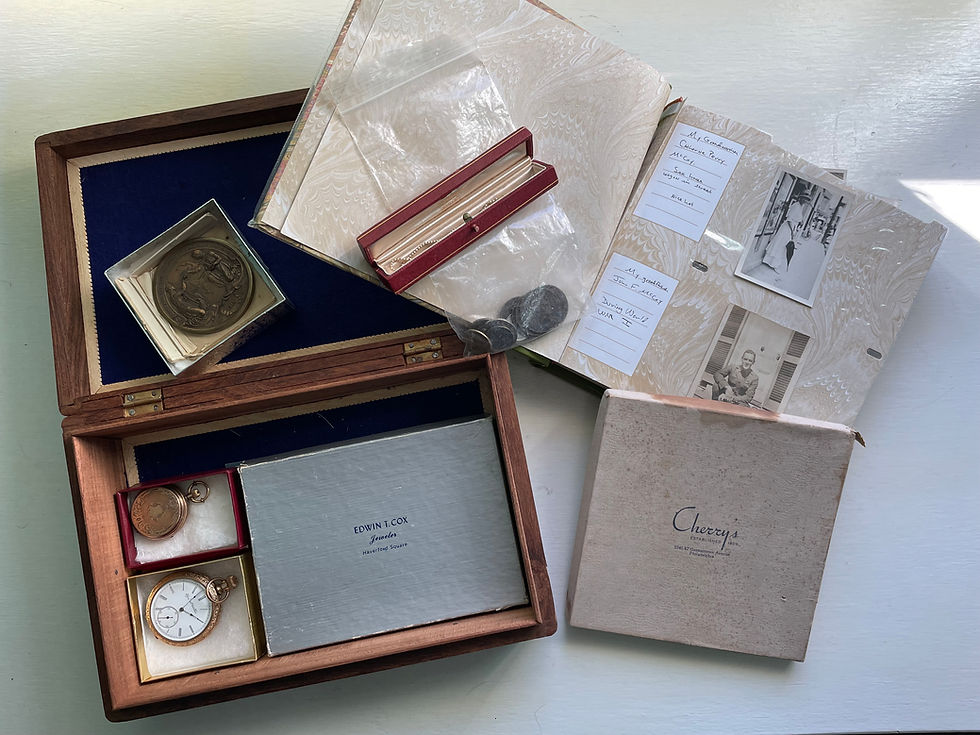Owning Reality
- thelastmccoylibrary

- Jan 12, 2022
- 3 min read
Updated: Jan 20, 2022
There's more to taking care of old family papers and photographs than placing them in preservation quality storage. There's even more than digitizing them, naming them, and preserving them electronically. Archivists call it provenance. In archival theory, the three main ways to appraise the value of an item is with content, context, and structure.
Now the value that's being appraised is less about money and more about historical significance and intellectual value, sometimes even emotional and community value. Content refers to the actual content of the item, whether it's an artist sketch of boats off the coast of Provincetown or financial documents about the sale of land. Structure refers to the way the content is organized from the font to the formatting of headings.
Context, though, refers to many different things which can define the value of an item. The first is the context the user takes from the item, which can be of value to them emotionally and intellectually. The second is the context of the item itself situated in important historical moments that serves as evidence of the times. Finally, it can also be the context of how the object has been passed down through the generations, i.e. an item might be more valuable if President Abraham Lincoln owned it at one point than if any of us plebeians did.
This can be important for the context of custody of an item: who created it, who preserved it, who made it available to the public. All of these pieces of knowledge can change the context of an item. In 1808, the archival community decided to ignore provenance and arrange items by subject, called a Classification Schedule. But the result was the separation of cohesive documents about specific institutions, which damaged the integrity of archives. In 1841, the term Respect des Fonds emerged, basically suggesting that archival items from a single institution, family, or person should be kept together. This is why government institutions have their own individual archives instead of sending their items to the National Archives and Records Administration.
Finally, in 1880, archivists embraced the respect for original order. Those who create or amass collections can intentionally order the items, which can change the context of the individual items and thereby create new knowledge. Archives realized it was important to maintain this original order to create properly contextualized collections.

Image 1 - A series of black and white photographs spread across a table as the curator struggles to place items in their chronological order.
However, if you're pulling photographs and papers out of old suitcases and mildewing trunks, the original order might not be feasible. Within the Last McCoy Library there are a few photo albums that retain the original order of the photographs simply because they were glued or otherwise attached to pages and stored in envelopes by their creator. The rest of the items I received are loose leaf. They have been sifted through by other McCoys, jumbled in containers, and spread out across family members.
The picture above shows an attempt to order the photographs in one collection chronologically. I based this on the type of photograph as well as trying to track persons through their aging. It's not an exact science, especially since I am in the beginning stages of genealogical research into the McCoy family line. But the Vintage McCoy Collection deserves a sense of cohesiveness that was lost as photographs mixed and shuffled. I tried to retain the original order of things, such as the envelopes of photographs left behind by Jean Shepherd. But some items were too scattered to be cohesive or useful. Sometimes the curator has to define reality whether they want to or not.





Comments